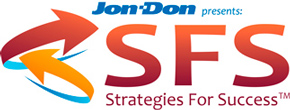 Last week I focused on the dangers of “E-Drift”- a common syndrome where the entrepreneur is constantly and restlessly looking for the “next great thing” in business. This very damaging inability of the business owner to concentrate their efforts is many times brought on by boredom in business.
Last week I focused on the dangers of “E-Drift”- a common syndrome where the entrepreneur is constantly and restlessly looking for the “next great thing” in business. This very damaging inability of the business owner to concentrate their efforts is many times brought on by boredom in business.
However, in this second part of my look at “E-Drift”—the dangers of constantly changing business direction—we’ll see how the “entrepreneur as problem solver” is also at risk for headaches. This happens when one grabs for any promise of relief as if it were an aspirin; and then always without first reading the label on the bottle.
That most entrepreneurs are experienced problem solvers is a given. After all, they’ve built their businesses around solving customers’ problems; so when they encounter within their own companies problems they can’t understand, nor solve, it frustrates and pains them.
Complicating this situation with feelings of loneliness and panic are owners of growing businesses who find themselves continually exploring new territory. Each day unfamiliar problems appear involving competitors, customers, and operations. It leaves one feeling exhausted; at risk of choosing any fix for problems.
The consequence of this constantly shifting approach is a “tactical standstill”. The company never gets a chance to get a foot hold and gain traction on any of the ideas the owner adopts. Each idea may be sound, and together they may be exactly what the business needs, but the company doesn’t benefit from any of them because none have time to take hold. Not only does this waste money, it also has an even worse effect on company morale.
The company’s employees may feel that every time a strategy starts to work, the owner announces yet another differing strategy; so instead of the company making consistent progress toward a goal, it appears to take one step forward and then two steps back. The only consistent result is a growing sense of frustration among the staff. And this leads right into the next consequence.
When the owner is constantly jumping from one new idea to the next, and then dismisses his previous new idea, it doesn’t take long for the people working in the company to become cynical. Soon they start dragging their feet when it comes to executing the owner’s latest-greatest idea. If this jumping from idea to idea has become a pattern, then people will eventually adopt a “this too shall pass” attitude.
As I post in our SFS Instructor’s Blog, I’m acutely aware of my role in the industry as one of the voices that business owners hear—and one I imagine they occasionally follow. Facilitating ideas and giving management advice is what Steve, Bill and I do in our Strategies for Success program. (And if you need more personalized support it is also what I and my associate business advisors do at Violand Management!)
But I’ve also witnessed first-hand the debilitating effect that constantly changing business directions, or test driving the newest business guru can have on a company. I have found it wise to adopt a “cooling off period” —48 or 72 hours or even a full 7 days—to let the initial rush of excitement with a new idea settle and give yourself time to think things through. Also, this usually gives you time to run the idea past some of the key people in your organization and gain their opinion rather than just ramming it through. So please- focus on staying focused!!!
Chuck Violand (more about Chuck)
SFS Instructor
CEO Violand Management Associates
